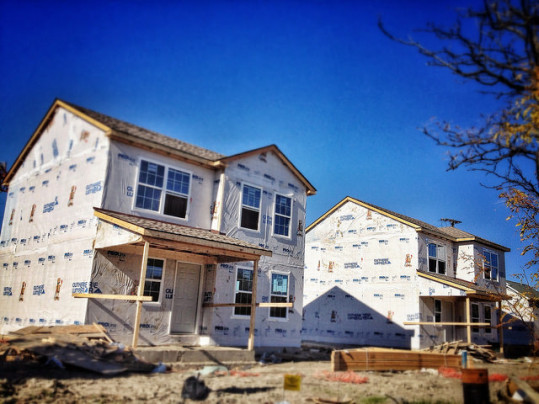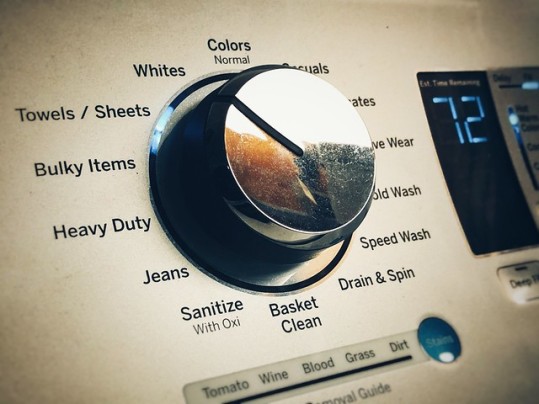A builder’s business depends on being able to gauge how interested Americans are in buying a house. After all, no one would go through the labor and expense of building a house without feeling confident that they’d be able to find a buyer once it was finished. That’s why the National Association of Home Builders measures builder confidence each month. If builders are optimistic and building homes, there’s a good chance the overall housing market is also doing well. In December, the NAHB’s Housing Market Index – which is scored on a scale where any number above 50 indicates that more builders view conditions as good than poor – reached 76. That’s the highest reading since June 1999. Greg Ugalde, NAHB’s chairman, said builders are responding to a rebound that began last spring. “Builders are continuing to see the housing rebound that began in the spring, supported by a low supply of existing homes, low mortgage rates, and a strong labor market,” Ugalde said. Among index components, the one measuring current traffic saw the biggest month-over-month improvement, rising seven points to 84. More here.
Archive for December 2019
Credit Standards Expected To Remain Stable
When you’re asking to borrow money, your lender has to determine whether or not you’ll be able to pay it back. To do this, they’ll look at your credit history and financial situation to get a feel for how well you handle your debts and obligations. Whether or not you’re approved to borrow will depend on whether you meet current credit standards. But those standards change over time. Sometimes they’re tighter and it’s harder to get approved than at other times. So what is the current outlook? Well, according to Fannie Mae’s Q4 2019 Mortgage Lender Sentiment Survey, standards have been fairly stable over the past three months, with credit easing at around the same pace as the previous quarter. That’s good news for potential borrowers. Even better, surveyed mortgage professionals said they don’t expect any major changes to credit requirements in the near future. That, combined with mortgage rates that are expected to remain steady in 2020, means the outlook for borrowers next year looks favorable. More here.
Forecast Sees Good Years Ahead For Housing
Home buyers and sellers can have very different views when it comes to housing market conditions. Rising prices, for example, are bad news for buyers but good news for anyone thinking about putting their home up for sale. In other words, your perception of the current market will be determined by your position in it. One thing everyone can agree on, though, is volatility. No one wants to be active in the market when it’s unpredictable. That’s why Freddie Mac’s most recent forecast is encouraging. Because, not only are they calling for a steady market in 2020, they also predict that conditions will remain stable through 2021. Sam Khater, Freddie Mac’s chief economist, says housing will remain solid despite potential economic ups-and-downs. “The economy has see increased volatility in November as hopes for a favorable resolution to the trade dispute have recently waned,” Khater said. “However, given low interest rates, modest inflation, and a solid labor market, the U.S. housing market continues to stand firm, and, our forecast is for the housing market to maintain momentum over the next two years.” More here.
Survey Finds Rates Mostly Flat Last Week
According to the Mortgage Bankers Association’s Weekly Applications Survey, average mortgage rates were mostly flat last week, with rates seeing little change for 30-year fixed-rate loans with both conforming and jumbo balances. Rates were also flat for 15-year fixed-rate loans, though they fell for mortgages backed by the Federal Housing Administration. Overall, rates are hovering just above historic lows and it’s helped boost mortgage demand. In fact, refinance activity is up 146 percent from last year and demand for loans to buy homes is up 5 percent. Joel Kan, MBA’s associate vice president of economic and industry forecasting, says favorable conditions should lead to more improvement in the coming months. “The November jobs data showed increased payroll gains and low unemployment, which means conditions remain favorable for steady purchase growth in the coming months,” Kan said. The MBA’s weekly survey has been conducted since 1990 and covers 75 percent of all retail residential mortgage applications. More here.
Are New Homes Getting Smaller?
Over the years, American homes have grown larger. In fact, the typical new home is about 1,000 square feet bigger than it was in 1980. But is the decades-long trend toward bigger homes coming to an end? Well, according to recent data, it may already have. That’s because, though the median size of a new single-family home built in 2018 was 2,386 square feet – which is, by no means, a small home – that number has been declining over the past few years. Part of the reason for the decline is growing demand for affordable homes. With the number of homes for sale lower than normal, new home builders are increasingly addressing buyers’ needs by building smaller, more affordable homes. The other factor is generational. Millennials have reached the age of the average first-time home buyer and, naturally, have different preferences than their parents. Spacious homes far from the city aren’t as popular with younger buyers, who prefer a smaller, more manageable home closer to work and amenities. Because of this, the trend toward smaller homes will likely continue in 2020 and beyond. More here.
Americans Say It’s A Good Time To Buy
Each month, Fannie Mae conducts a survey asking respondents for their perception of the housing market, buying and selling a home, mortgage rates, their job, home prices, etc. Their Home Purchase Sentiment Index is meant to gauge Americans’ interest in buying a home. In November, the Index improved, with a significant increase in the number of participants who said they thought now was a good time to buy a house. In fact, the percentage of Americans who think it’s a good time to buy rose to 61 percent from 57 percent the previous month. That’s the highest it’s been since March 2018. Doug Duncan, Fannie Mae’s senior vice president and chief economist, says low mortgage rates have helped prospective home buyers, but inventory remains an obstacle. “Over the past year, a growing share of consumers say that they expect mortgage rates to remain steady,” Duncan said. “While low rates have helped boost housing affordability compared to last year, the HPSI has increased only moderately in that timeframe. This may be due in part to the ongoing challenge of tight housing supply, especially in the starter home market.” More here.
Speciality Rooms Are Popular With Younger Buyers
There are some rooms you’ll find in every house. Kitchens, bathrooms, and bedrooms come to mind. Libraries, on the other hand, aren’t as common. In short, some rooms are more essential than others. But these days, the list of essential spaces is expanding. And, according to a new survey from the National Association of Home Builders, buyers – and especially younger buyers – have strong feelings about which types of rooms they want in their next house. Among millennials home buyers, laundry rooms lead the list. In fact, 86 percent of millennial respondents said having a laundry room was either desirable or a must have. Other speciality rooms that were popular with large majorities of millennials included dining rooms, home offices, and great rooms. But naturally, millennials aren’t the only buyers who have a preference for speciality spaces. After all, older buyers likely also prefer to have a laundry room in the house. However, there are some generational differences in which rooms were deemed most important to which buyers. For example, the survey found younger buyers were much more likely than other generations to say their next house needed to have an exercise, media, or game room. More here.







